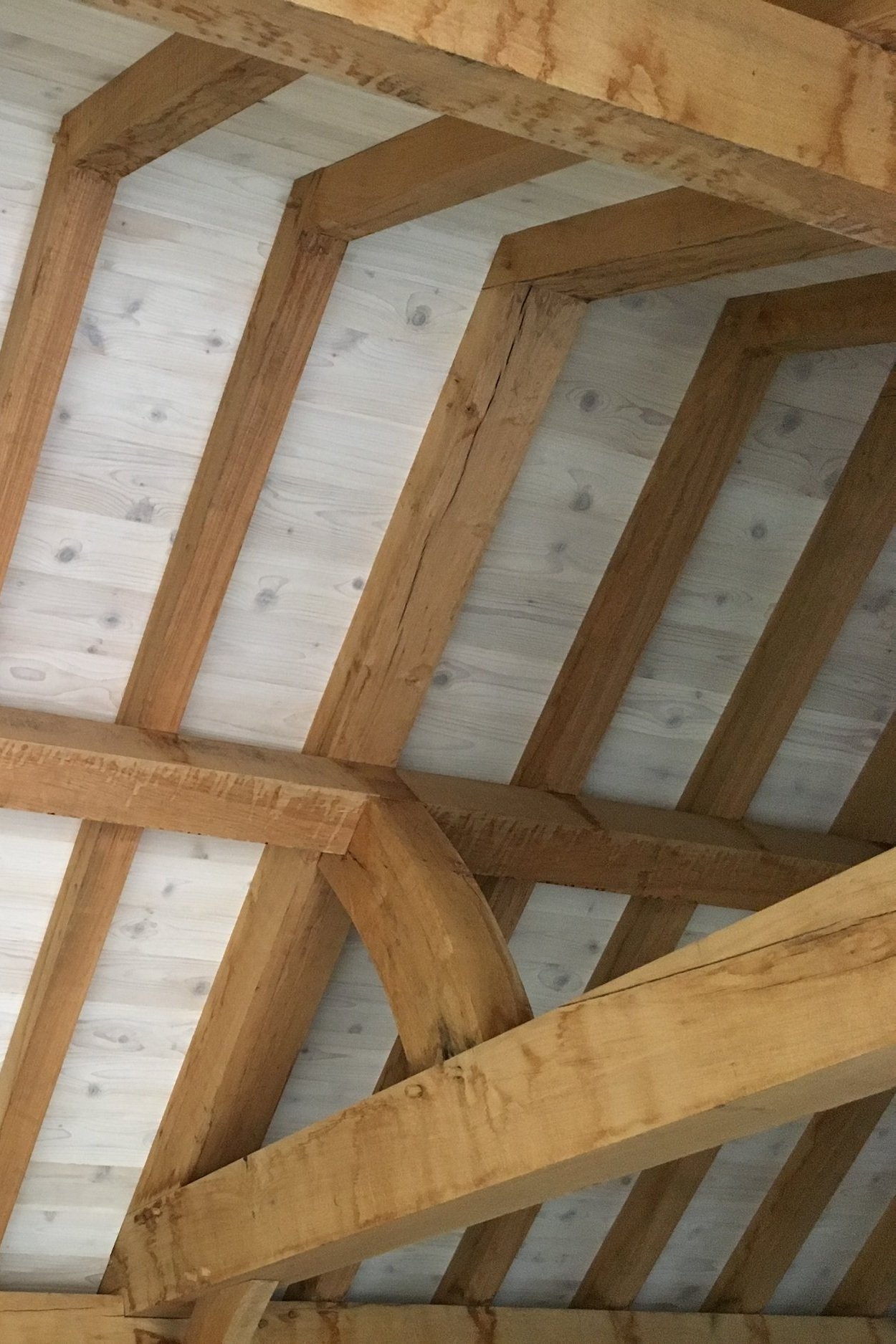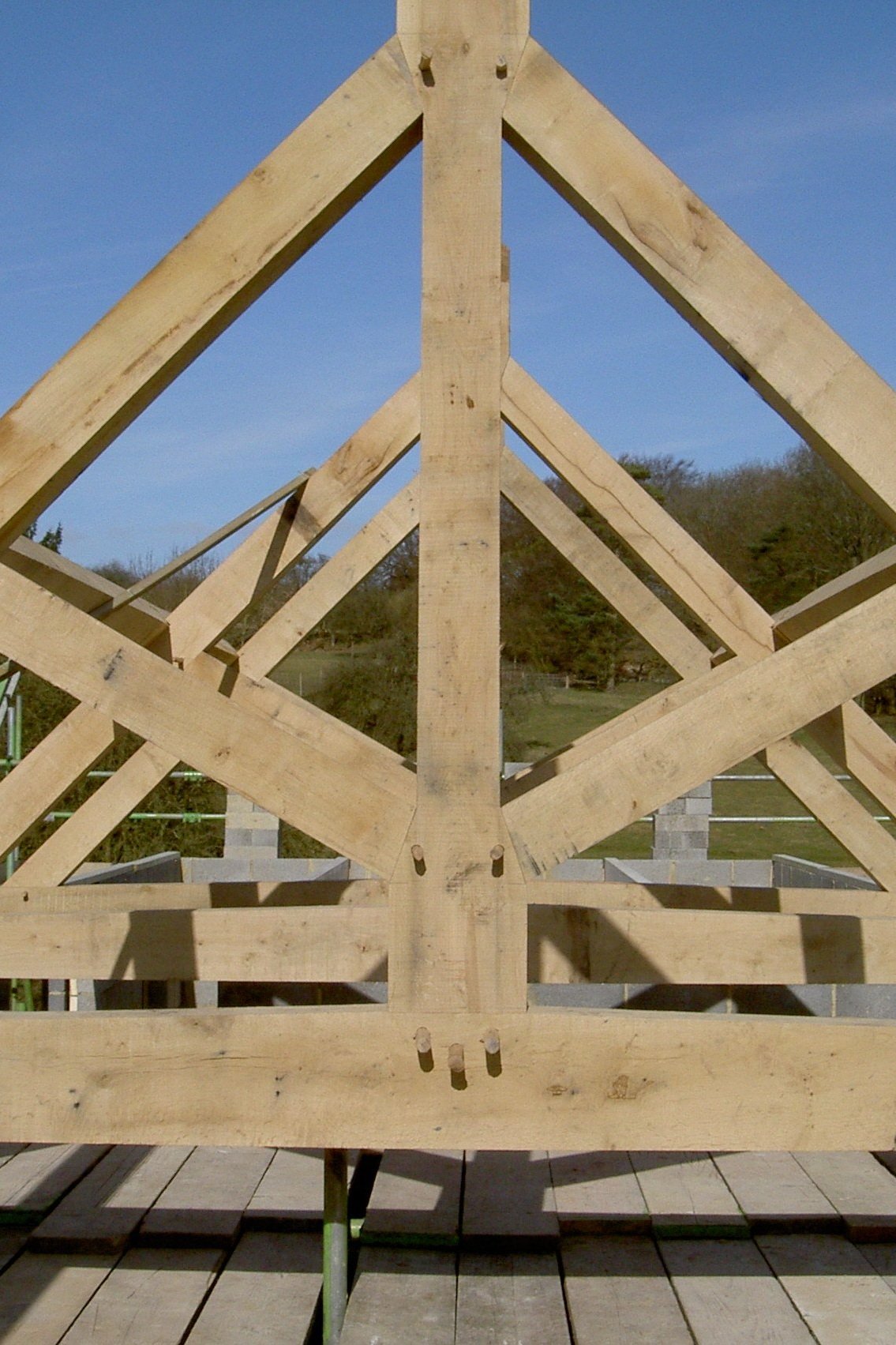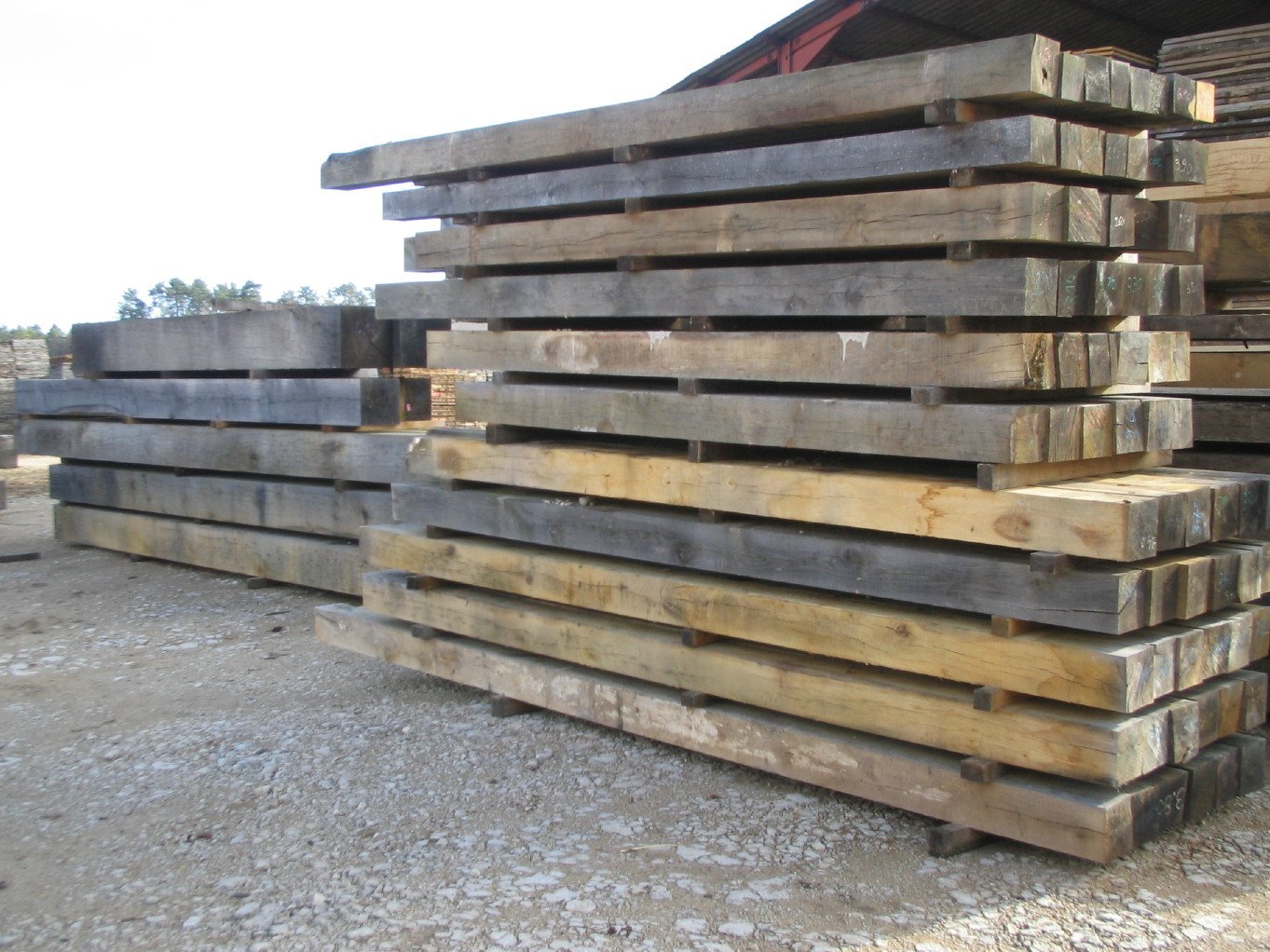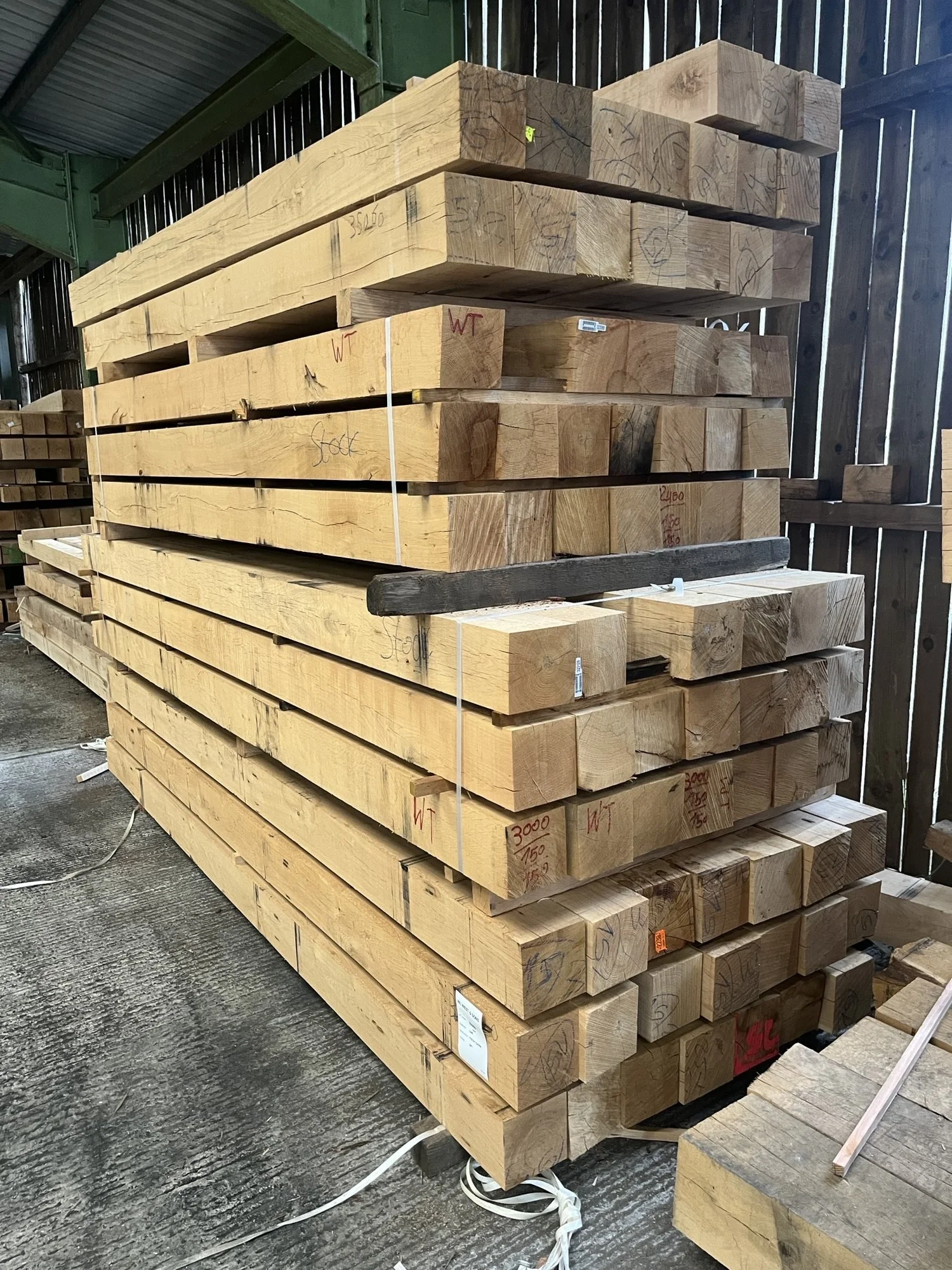Beams & Structures
Oak Beams
For centuries, we have used oak beams for structural frames in the UK. Prized for their natural beauty, density, strength and resistance to decay, oak beams have traditionally been the wood of choice for timber frames and to create decorative features, such as mantlepieces.
Green oak is predominantly used for construction as it is very easy to cut and joint. However, air dried oak is the preferred option when it is critical to minimise any shrinkage and/or movement. Air dried oak beams are ideal for restoration projects where elements of an existing timber frame need to be replaced or for items such as floor joists where stability is especially important.
When it comes to oak beams, understanding the differences between air dried and green oak is essential.
Air dried oak refers to wood that has been left to naturally dry in the open air over a period of time. This slow drying process allows the moisture content of the wood to gradually decrease, resulting in a more stable material. Green oak refers to freshly cut wood that has not undergone any drying process. It retains a higher moisture content, making it more prone to movement and shrinkage as it dries. The key distinction between the two lies in their moisture levels and stability, with air dried oak being the preferred choice for projects that require a more predictable and less prone to warping material.
Take a look below for further information on the differences between air dried oak beams and green oak beams.




About air dried oak
-
Air dried oak finds extensive use in various woodworking and construction applications. Its unique characteristics and reduced moisture content make it a preferred choice for many projects. It is also sought after for interior trim work, such as mouldings, panelling, and flooring, as its lower moisture content reduces the risk of warping and movement over time.
-
We often find that air dried oak is popular for outdoor applications like decking, fencing, and timber framing, thanks to its natural resistance to decay and durability in different weather conditions. Its beautiful grain patterns and warm aesthetics make it a desirable option for architectural features, decorative elements and bespoke woodworking projects.
-
Oak is incredibly versatile and whether it is for a listed building or a modern new-build – oak beams are frequently the timber of choice.
-
Our oak is sourced from well-managed woodlands across Europe and, if required, we can source timber with chain of custody certification. Air dried beams are generally cut into standard section sizes and allowed to dry naturally, sometimes over several years. As the timber dries, it shrinks, stabilises and becomes harder. The time and expertise involved in seasoning means that air dried oak is a more expensive option than green oak, but the benefits are clear for specific applications.
-
Air dried oak will turn a silvery grey during its drying process, but when planed will return to its sawn colour. It should be remembered that only beam sizes up to 100mm can be kiln dried, over this size the moisture content will vary between 20 – 60%. Large section sized beams will never fully dry out.
About green oak beams
-
A green oak beam is something special – beautiful, tactile, strong, and durable. Timber framed buildings are more popular than ever as they are recognised as being a more environmentally-friendly and a more sustainable method of construction for homes, garages, barns and garden buildings.
-
Our oak is sourced from well-managed woodlands in Europe and, if required, we can source timber with chain of custody certification.
-
Green oak is fresh sawn and will have a high moisture content. It is easier to work than air dried oak, and in oak framed buildings will shrink and tighten the joints as it matures.
-
Our beam sections are generally cut to order for your projects.
BS5756 Grading
| BS5756 Visual Grade | Description | Cross-Sectional Size | Equivalent Mechanical Grade |
|---|---|---|---|
| THA | Upper category (fewer defects) | More than 20,000mm² and/or more than 100mm thick | D40 |
| THB | Lower category (more defects) | More than 20,000mm² and/or more than 100mm thick | D30 |
| TH1 | Upper category (fewer defects) | More than 20,000mm² and/or more than 100mm thick | D30 |
| TH2 | Lower category (more defects) | More than 20,000mm² and/or more than 100mm thick | D24 |
Additional Information
-
Green Oak Beams:
These are classed as “wet”. Cut from stock logs or ordered on a regular delivery from Europe.
-
Air dried oak is harder and more difficult to work than green oak and will blunt tools more quickly.
-
Timber should be regularly inspected signs of decay, such as cracks or splits. Keep beams clean and dry to prevent the growth of mould or mildew. Oak can be left untreated, externally this will turn a silvery grey as it ages. It can have a protective finish applied, such as a wood preservative or oil, to protect the timber from insects and decay.
-
All fixings should be stainless steel. Oak contains tannic acid which will corrode ferrous metals and result in blue/black stains on the oak and anything else it comes into contact with.
Do you require quality oak beams for your next project?
We are a leading UK timber merchant & machinist, supplying trade, commercial & homeowners.
From beams to bespoke oak pergolas - we can help. With over 155 years’ experience, timber is what we do. Get in touch with our Sales Team to get your timber structures or beams quote.


